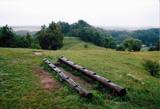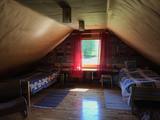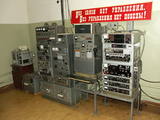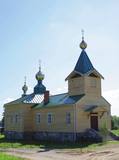| No | Name | Description |
|---|---|---|
|
The Rietavas Park was once the largest landscape park in Lithuania. It was established between 1848 and 1855 in a naturally cleaned forest and reconstructed in 1904 and 1905. This is a very nice park with local bushes and trees, as well as several foreign plants. Various alleys of trees and fragments of the hedges have been preserved along with the white gate, the red gate and a guard's hut. The park has a complex system of bodies of water, including a few ponds, a curvy river and an island that is surrounded by the old river. |
||
|
Atpūtas vieta ģimenes īpašumā Vārvē, kurā tiek piedāvāti pirts rituāli. Tāpat ir iespēja pārnakšņot namiņā un atpūsties pie dabas un Ventas upes. |
||
|
Diplomēts mežsaimnieks Imants Urpens Alojas novada "Ošlejās" audzē šitaki sēnes. Šī ir arī mācību saimniecība, uz kuru brauc mācīties pārsvarā ārzemnieki. Saimniecība ir bioloģiski sertificēta. Pieņem ekskursijas un pasūtījumus sēņu audzēšanai un micēlija iegādei. |
||
|
In the central part of the Žemaitija Highland, this park was established to protect local landscapes. Lithuania’s highest hillocks are found here – Mėdvegalis (235 m above sea level) and Šatrija (229 m). There are also other hillocks which offer a great view of the area – make up your own tour here.
|
||
|
Nemunas bildet sich bei der Mündung ins Haff ein einzigartiges Gebiet mit Mooren, alten Flußarmen, Lagunenseen, Flußauen und der Rusnė-Insel, das ein bedeutender Erholungsplatz für Zugvögel ist. Im Frühling stehen große Fläsche unter Wasser. |
||
|
Um In der Altstadt von Cēsis ein warmes Brot zu bekommen, kann man nicht nur den Anweisungen, sondern auch dem verlockenden Brotgeruch folgen, das durch den Bogen direkt zur Bäckerei führt. Das Brot wird aus den in Lettland biologisch angebauten Körnern gebacken, es wird mit natürlichem Sauerteig hergestellt. Brotverkostung, Erzählung über die Zutaten, Gärung und Backen eines gesunden Brotes. |
||
|
Die Geschichte der lutherischen Kirche und Gemeinde von Kaltene began 1567, als der Herzog von Kurland Gotthard Kettler befahl neue Kirchen in Kurland zu bauen. Eine davon war eine Kirche in Kaltene – die St. Katharinen Kirche. 1848 wurde anstelle der alten Holzkirche eine Lehmkirche errichtet. 1880 wurde eine Sakristei zugebaut, aber das Gebäude der Kirche 1896 umgebaut und vergrößert wurde. Die Kirche wurde während des Ersten Weltkriegs von einem Geschoß eines russischen Torpedoboots zerstört. Die Kirche wurde in der ersten Hälfte der 20er Jahre des 20. Jahrhunderts renoviert. Das Altarbild der Kirche von Kaltene „Christus und St. Peter am Meer” hat 1898 M. Pols geschafft (nach Motiven von R. Richter). Die im 18. Jahrhundert errichtete Kanzel und die Orgel der Kirche sind Kulturdenkmäler und stehen unter Staatsschutz. Die Orgel wurde von einem Orgelmeister Augusts Martins 1843 gebaut und befand sich ursprünglich in einer Kirche in Gulbene. 1943 wurde die Orgel in die Kirche von Kaltene umgesetzt. Diese Orgel ist die älteste erhaltene der vom Orgelmeister Augusts Martins gebauten Orgeln. Die Kirchenglocke wurde 2006 auf dem Betrieb „Liepājas Metalurgs” gegossen. 2012 – 2013 wurde neben der Kirche ein neues Gemeindehaus gebaut. Bei den Kirchentoren wurden die ersten Szenen der Lauffilmes “Der lange Weg in den Dünen”, sowie “Schilfwald” gedreht. Unweit befindet sich der Hof „Putniņi”. 1921 besuchte dieser Hof in Kaltene der damalige Kulturminister Rainis. Hier befand sich damals ein Geschäft. Während des Zweiten Weltkriegs wurde der alte Hof „Putniņi” von den deutschen Truppen verbrannt. (Die Quelle: Roja TIZ) |
||
|
The museum at Egļava has an exhibition about forestry in Latvia before and after World War II. The exhibit features forestry tools and equipment, as well as textiles from the former Balvi District along with samples of ceramics and woodworking. The former forest ranger house has rooms to provide accommodations to guests. |
||
|
Diese Tour wird Sie mit Hilfe des Geschmacks durch Lettland führen. Wenn Sie Riga verlassen haben, besuchen Sie einen Hof, der auf Getreidezucht spezialisiert ist, köstliche Krokante backt und lokale Vollkorngerichte vorbereitet. Danach besuchen Sie die Burg von Bauska, die sich zwischen zwei Flüssen befindet, und die Brauerei von Bauska, die auf ihre Produkte ohne Konservierungsstoffe stolz ist. Weiter besichtigen Sie das ethnographische Museum in der Mühle von Ausekli, wo Sie ihre eigene traditionelle Pirogge vorbereiten können. Die Tour führt über den Fluss Daugava und Sie können an einem Café halten, wo man hausgemachtes Eis und einen salzigen Eissalat verkosten kann. Als nächstes genießen Sie eine Fahrt mit einem Wikingerschiff um die Ruinen der legendären Burg von Koknese und den Besuch des Schlosses von Cesvaine. Weiter folgt der Käseverkostung auf einem Ziegenhof noch eine Verkostung von Käsen, die aus Kuhmilch gemacht sind. Sie übernachten im Landgut von Vecgulbene, wo Spa-Behandlungen angeboten werden. Am nächsten Tag haben Sie die Möglichkeit, ihr eigenes traditionelles Schwarzbrot zu backen und dabei humorvollen Geschichten und Anweisungen der Bäckerin zuzuhören. Während das Brot gebacken wird, besuchen Sie einen anderen Käsehersteller in Trikata, wo Sie den Käse auch verkosten können. Sie besuchen die Brauerei von Valmiermuiza, die ein exklusives Kellerbier braut und für die lettischen Traditionen des Biertrinkens bei jedem Fest wirbt. Die reizvolle Stadt Cesis wartet auf Sie mit den Ruinen ihrer eindrucksvollen mittelalterlichen Burg, mit schmalen alten Straßen und der bekannten Brauerei von Cesis. Das historische Gebäude der Brauerei wird heute nur als eine Sehenswürdigkeit benutzt, aber das Bier wird in einem modernen Gebäude hergestellt. Diese Brauerei ist die zweitgrößte in Lettland. Nach dem Besuch der Brauerei fahren Sie zu der Windmühle von Araisi, wo Sie einen traditionellen Brei probieren können. Vor der Rückfahrt nach Riga besuchen Sie noch die Burg von Turaida. |
||
|
Bed & breakfast "Upes", in the centre of Livonian village Pitrags. Natural toilet. Local products. Lunch boxes, transfer service on request. |
||
|
The café is located in the centre of Tukums. Latvian cuisine: Boiled tongue, tongue salad, potato salad, cod liver salad, quenelle, bean or sorrel soup, sautéed mushrooms, homemade steak haché, crepes, crunchy oatmeal, strawberry soup. |
||
|
On the left bank of the ancient Gauja River valley, between the Paparžu ravine and the ravine along which the Sigulda-Turaida road passes through the valley there are the ruins of a castle built by the Order of the Brethren of the Sword. Construction on the castle began in 1207, and three decades later, in 1236, the castle was rebuilt for the needs of the Livonian Order. The Sigulda Castle suffered much damage during wars in the late 16th and early 17th century. During the Great Northern War, it was burned down and never restored. What is there today is the south-western segment of the castle's convent building, as well as the tower of the main gate. Beyond that is the internal forecastle, where there is an open-air stage for the annual Sigulda Opera Music Festival and other public events. There are also impressive views of the ancient Gauja River valley, Krimulda and Turaida. Reconstruction of the ruins is currently ongoing, and after the work is completed a second tower on the left side of the stage will be available to visitors. The plan is to install crossings around the walls of the convent building. Presently the ruins are available on a 24/7 basis and free of charge, but after the restorations are completed in 2012, admission will be charged. |
||
|
Maršruts "Murjāņi - Līgatne" ved caur Gaujas senieleju ar devona smilšakmens atsegumiem, raksturīgo augu valsti un dzīvniekiem. Krastos sastopami Latvijā lielākie nogāžu un gravu meži ar liepām, ozoliem, gobām un ošiem. Upes līkumos palienē aug baltalkšņu un vīksnu audzes. Uz koku stumbriem atrodams plaušķērpis. Senieleja bagāta ar sausokņiem un kritalām, tāpēc Gaujas krastu mežos dzīvo visu Latvijā sastopamo dzeņu dzimtas sugu putni. Smilšainajās Gaujmalas pļavās un Gaujas vecupēs ir bagātīga bezmugurkaulnieku fauna. Upes krastos ir smilšakmens klintis ar čurkstu alām un zivju dzenīša ligzdām. Klinšu pakājē iztek avoti, kas uztur mikroklimatu ielejā. Gauja ir nozīmīga arī kā Latvijas lielākā lašupe. Maršruts ir daļēji marķēts un papildināts ar norādēm un informācijas stendiem. |
||
|
This extremely secret bunker was one of the most important facilities in Soviet Latvia in the event of a nuclear attack. Under the code name of “Rest Home,” the bunker is nine metres under the ground at the Līgatne Rehabilitation Centre, and it would have been the place where Soviet Latvian government officials would have gone in the event of an attack. The status of a secret object was lifted only in 2003. The underground installation has been preserved fully.
|
||
|
Iespaidīgais un monumentālais dievnams uzcelts 1816. gadā. No baznīcas nozīmīgākajām interjera detaļām ir saglabājušās ērģeles, altārglezna, lustra un kroņlukturis. Jāpiebilst, ka baznīca savā pastāvēšanas laikā nav pārtraukusi savu darbību. |
||
|
The building was built in 1800 and rebuilt in 1825. Zosna Catholic Church is one of the smallest wooden churches in Latgale and the oldest church of the Rāzna National Park. The building is famous for the altarpiece "Madonna with a child". Noteworthy is also the gate, fence (built from red bricks and boulders) and the bell tower. Not far from the church there lives a manager with whom you can agree on seeing the church from the inside. |
||
|
Tiskādi Orthodox Church is the cultural monument of the local significance. The construction works of the building lasted from 1829 to 1878. The
church was reconstructed in 2008. The church has antique icons and the library
of sacred literature.
|
||
|
has a permanent exhibition that features a Suiti living room and kitchen and liturgical apparel worn by Catholic priests. In the exhibition hall there are changing exhibitions related to the history and present of the Suiti Women ethnographic ensemble. A special offer involves performances by Suiti women, Suiti men and Suiti bagpipe players. Also in the building are the Alsunga Tourism Information Centre, as well as ceramics and weaving workshops. Contact the museum in advance to arrange for performances and master's classes. |
||
|
The craftsman uses experimental archaeological methods to produce the jewellery of ancient Baltic tribes. He will tell you about their symbolism, meaning and wearing traditions. You can tour the workshop and purchase jewellery that has been made there. |
||
|
Winner of the first bakery contest in baking rye bread according to a traditional recipe using wholegrain rye-flour milled in Sangaste Mill. |
||
























